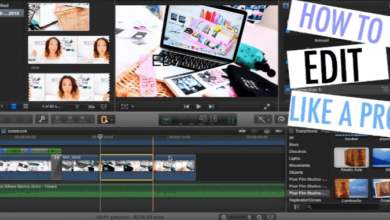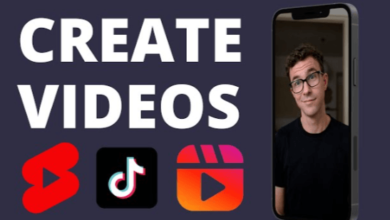How to Create Animated Titles and Lower Thirds

The creation of animated titles and lower thirds is an essential skill in the visual storytelling toolkit, significantly enhancing the viewer’s engagement and comprehension. To achieve impactful results, one must consider various elements, including software selection, design principles, and animation techniques. A methodical approach to typography, color theory, and motion dynamics can transform static text into captivating visuals. However, the intricacies of these processes can often be daunting. Understanding the foundational aspects of this craft is crucial before moving forward to explore more advanced techniques that can elevate your projects to a professional standard.
Understanding Animated Titles
Clarity in communication is paramount, especially when it comes to animated titles, which serve as both visual anchors and narrative guides in multimedia presentations.
Effective motion graphics leverage diverse typography styles and color theories to enhance storytelling elements, thereby boosting audience engagement.
Exploring various software options allows creators to craft dynamic titles that resonate, ensuring the message is both captivating and clear.
Tools for Animation Creation
Animation creation requires a robust set of tools that cater to both the artistic and technical demands of the craft.
Utilizing advanced animation software like Adobe After Effects or Blender empowers creators to design stunning motion graphics. These tools offer flexibility, enabling users to experiment freely with visual elements, transitions, and effects, ultimately harnessing the power of animation to tell captivating stories.
Design Principles to Consider
When crafting animated titles and lower thirds, several design principles must be considered to ensure effective communication and aesthetic appeal.
Prioritize typography choices that enhance readability and align with your brand identity.
Additionally, leverage color theory to evoke emotions and create contrast, ensuring your text stands out against backgrounds.
These foundational elements empower your design to resonate deeply with audiences, enhancing their viewing experience.
Animation Techniques and Effects
The visual impact of animated titles and lower thirds hinges not only on their design principles but also on the techniques and effects employed to bring them to life.
Utilizing motion graphics, animators can create dynamic transitions and fluid movements that enhance typography styles.
Effects such as easing, scaling, and rotation infuse energy, ensuring that your titles captivate audiences and convey messages with clarity and style.
Exporting and Implementing Your Work
Successfully exporting and implementing animated titles and lower thirds is crucial for ensuring that your creative vision translates seamlessly onto various platforms.
Choose the right export formats—such as MOV or MP4—to maintain quality.
Be prepared for implementation challenges, including compatibility issues and resolution settings.
A thorough understanding of these aspects ensures your work resonates, empowering you to share your artistic expressions freely and effectively.
Conclusion
In the realm of visual storytelling, animated titles and lower thirds serve as the icing on the cake, enhancing narrative engagement. Mastery of design principles, coupled with proficient use of animation software, enables the creation of compelling visuals. By integrating dynamic effects and ensuring proper export formats, creators can seamlessly implement these elements across various platforms. Ultimately, the ability to animate titles not only elevates the aesthetic quality of projects but also enriches the viewer’s experience.





